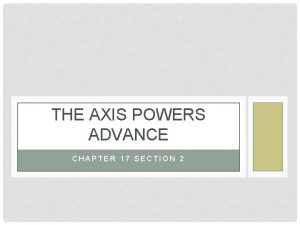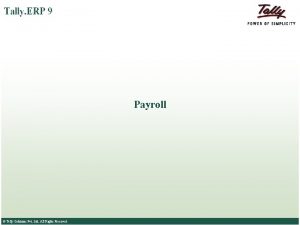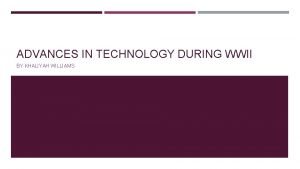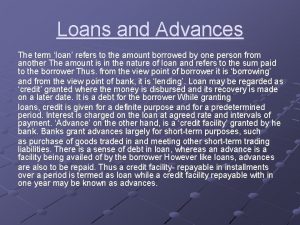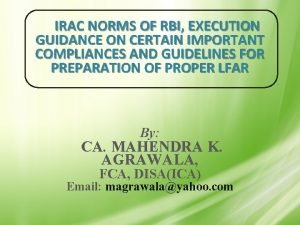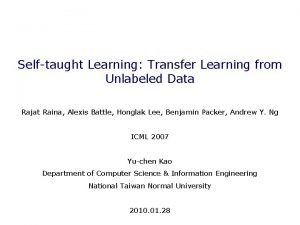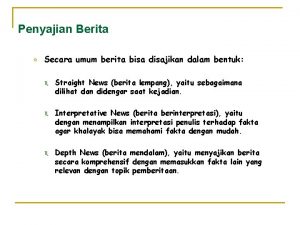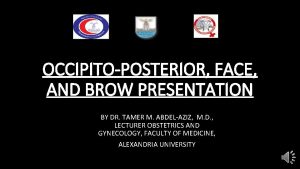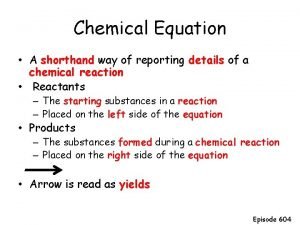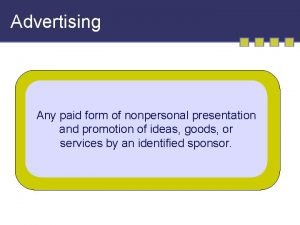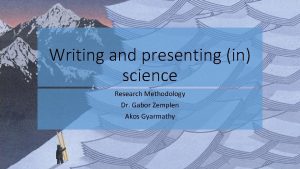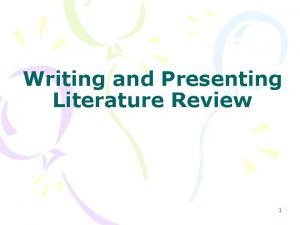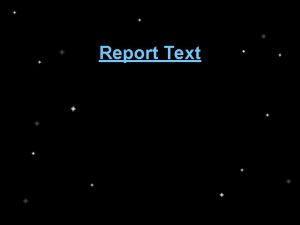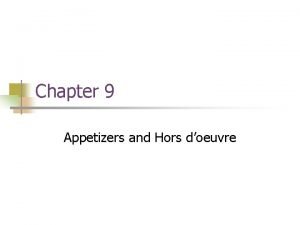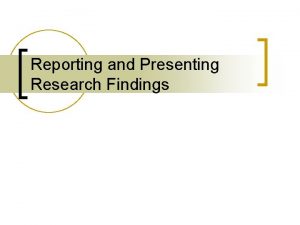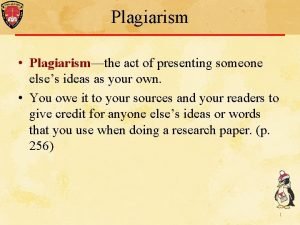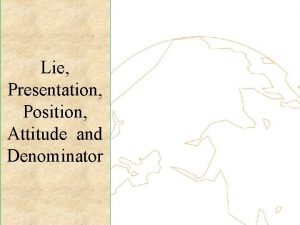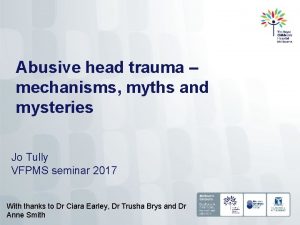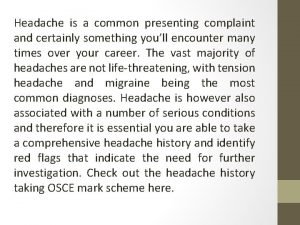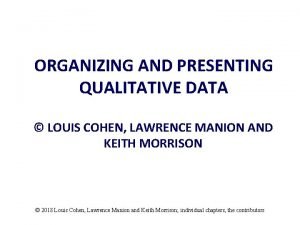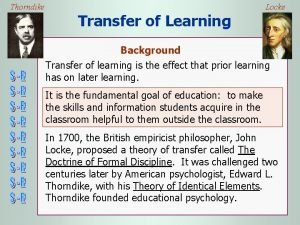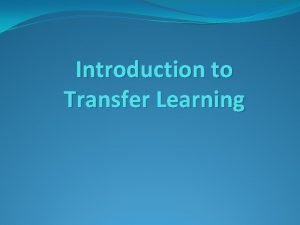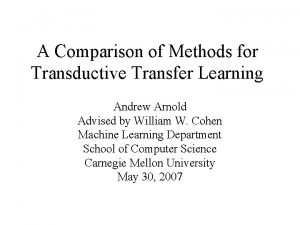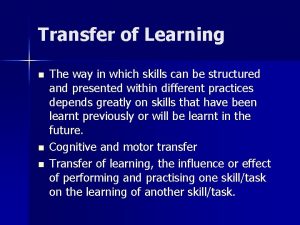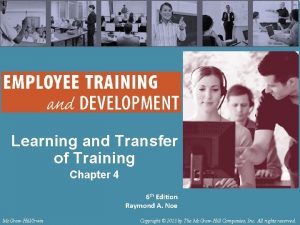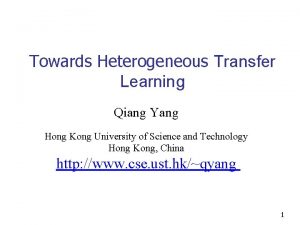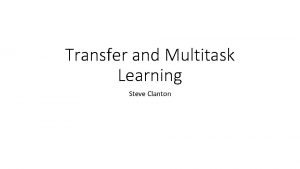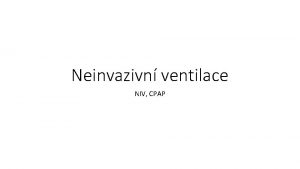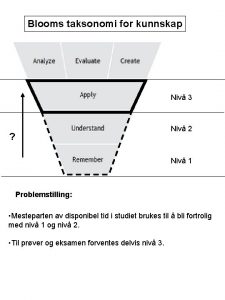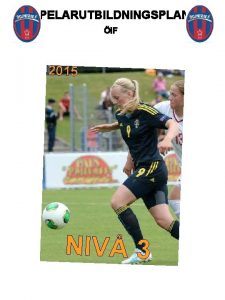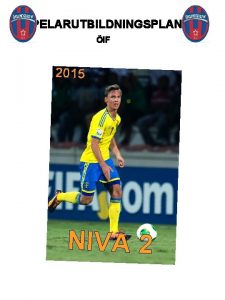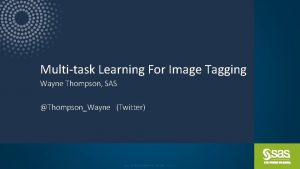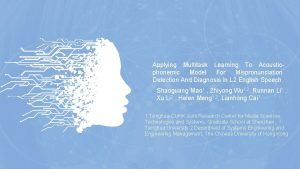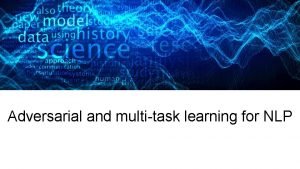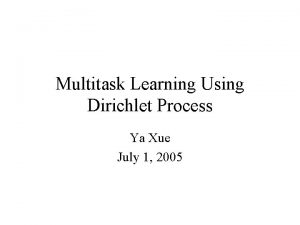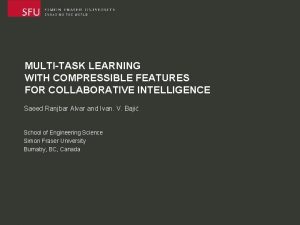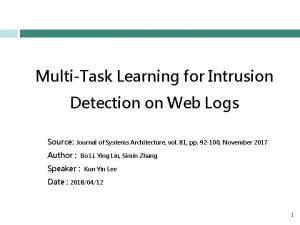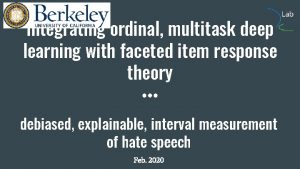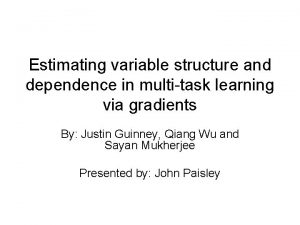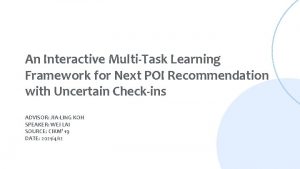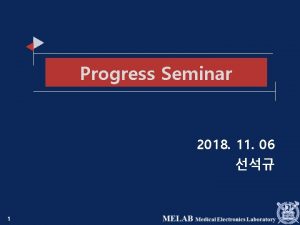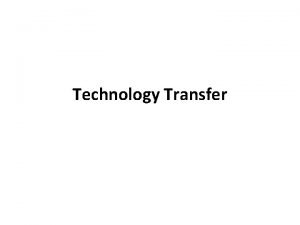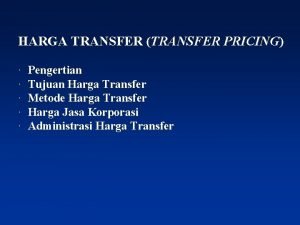Advances in Transfer Learning MultiTask Learning Presenting Niv























































- Slides: 55

Advances in Transfer Learning & Multi-Task Learning Presenting: Niv Granot, Lior Yariv

Human-Brain Aspect • We have an inherent ability to transfer knowledge across tasks: • Know how to throw a ball Learn how to play basketball • Know math and statistics Learn machine learning • We naturally combine tasks to learn better • Learn how to read and write simultaneously • Learn Deep Learning and Computer Vision

Transfer Learning Tasks Relation in Deep Learning Multi-Task Learning

Coming to Solve a New Task Traditional Learning from scratch VS Transfer Learning Use learned and related tasks

Key Motivation for Transfer Learning • Deep-Learning Need a whole lot of (labeled) data! • Why not just use what we already know? Extracted features contain valuable information!

What is Transfer Learning? • Take a network trained on a source domain for a source task • Adapt it for the target domain to solve a new target task

Two Main Scenarios: • Different task, same domain: • Different label space • Completely different task • Different domain, same task: • Different feature space • Different distribution

Taskonomy: Disentangling Task Transfer Learning Amir Zamir, Alexander Sax, William Shen, Leonidas Guibas, Jitendra Malik, Silvio Savarese Best Paper CVPR 2018

Which Visual Tasks Can we Transfer? • Which tasks can be transferred? Need some relation!

Which Visual Tasks Can we Transfer? • Which tasks can be transferred? Need some relation! • Are computer vision tasks related? Input Image Depth Estimation Surface Normals Can we trust our intuition? Moreover- How strong is this relationship? How is it useful?

Taskonomy = Task Taxonomy Modeling the structure of space of visual tasks: • Existence of (nontrivial? ) relationships • First and higher order dependencies • Measurements of the relations • Reduce demand for labeled data Efficient Transfer Learning !

Taskonomy: Dig Into Details • Fully computational method for quantifying task relationships • Focus on Supervised tasks • Task Bank: 26 semantic, 2 D, 3 D task • Data Set: - 4 million real images - Annotated for every task • Objective: Maximize collective performance While minimizing the used supervision

Taskonomy: Modeling 1. Task-specific Modeling 2. Transfer Modeling 3. Task Affinity Normalization 4. Compute Taxonomy

1. Task-specific Modeling • Train a fully supervised network for each task • Encoder-Decoder architecture (homogeneous) • Freeze their weights

1. Task-specific Modeling

Taskonomy: Modeling 1. Task-specific Modeling 2. Transfer Modeling 3. Task Affinity Normalization 4. Compute Taxonomy

2. Transfer Modeling • Given a representation from the source task encoder • Train a small readout (decoder) for the target task • The performance determine the task affinity

2. Transfer Modeling • First order: All source-target combinations • Higher-Order: • Multiple source tasks • Receive multiple representations in the input

Taskonomy: Modeling 1. Task-specific Modeling 2. Transfer Modeling 3. Task Affinity Normalization 4. Compute Taxonomy

3. Normalization • Have affinity matrix of transferability across tasks • Tasks live in different spaces • Need normalization!

Taskonomy: Modeling 1. Task-specific Modeling 2. Transfer Modeling 3. Task Affinity Normalization 4. Compute Taxonomy

4. Compute Taxonomy • Given: Normalized task affinity matrix • Goal: Taxonomical structure • Optimal subgraph selection • Maximize the performance for all tasks • Constraint of source budget • Outcomes: • What are best source tasks • Best sources for each target • Solve a novel task with little data

Taskonomy: Modeling 1. Task-specific Modeling 2. Transfer Modeling 3. Task Affinity Normalization 4. Compute Taxonomy

Taskonomy: Experiments • 26 Task-Specific Networks • ~3000 Transfer Networks • Transfer training data: 8 x – 120 x less • 47, 829 GPU hours

Taskonomy: Results • Live API

Break

Two Main Scenarios: • Different task, same domain: • Different label space • Completely different task • Different domain, same task: • Different feature space • Different distribution

Partial Transfer Learning with Selective Adversarial Networks Zhangjie Cao, Mingsheng Long, Jianmin Wang, Michael I. Jordan CVPR 2018

Domain Adaptation • Assume: Same label space, different feature distributions • Learning: Domain-invariant feature representations • The classifier learned on source task is used for the target task

Partial Transfer Learning •

How to Solve it ? What happens if we apply domain adaptation ? Negative Transfer Matching the whole source and target domains may perform worse than using original classifier!

Main Goals • Avoid negative transfer Selecting out the outlier classes • Promote positive learning Adapting the shared label space

Successful method for Domain Adaptation: Domain Adversarial Networks Prone to negative transfer!

Selective Adversarial Networks (SAN) Align shared classes Distribution Select outlier classes Alleviates negative transfer Promotes positive transfer

SAN - Architecture x Feature Extractor Classifier Discrim-1 Discrim-k

SAN - Loss • x Cls FE Discr 1 Discrk

Partial Transfer Leaning with SAN Method Image. Net 1 K Caltech 84 Caltech 256 Image. Net 84 Alex. Net 52. 37 47. 35 Rev. Grad – Domain Adverserial Learning 51. 34 47. 02 SAN-selective 66. 78 51. 25 SAN-entropy 55. 27 52. 31 SAN 68. 45 55. 61

Partial Transfer Leaning with SAN 2 D Projection of bottleneck representations

Partial Transfer Leaning with SAN 2 D Projection of bottleneck representations Source classes Target classes

Transfer Learning Tasks Relation in Deep Learning Multi-Task Muli-Task Learning

Multi Task Learning (MTL)

Motivation – Inductive Bias

How to Solve MTL? •

Multi-Task Learning as Multi. Objective Optimization Ozan Sener, Vladlen Koltun NIPS 2018

Multi Objective Optimization • Find Pareto-optimal solution • Not dominated by any other Can be solved by - Multiple Gradient Descent Algorithm (MGDA)

MGDA

Issues with Optimization Problem

Issues with Optimization Problem

Multi. Mnist • Classify two digits in a single image: • Task L – Classify upper-left digit • Task R – Classify lower-right digit

Multi. Mnist Results

celeb. A

celeb. A Each attribute Binary classification task 40 -way MTL Method Single Task Uniform Scaling Kendall et al. 2018 Average Error 8. 77 9. 62 9. 53 Grad. Norm Multi-Objective Optimization 8. 44 8. 25

Scene Understanding Semantic Segmentation Instance Segmentation Depth Estimation

Scene Understanding Results (2 D Projections) Y-axis: Depth Estimation X-axis: Semantic Segmentation Y-axis: Instance Segmentation X-axis: Semantic Segmentation

Questions ?
 Chapter 17 section 2 the axis advances
Chapter 17 section 2 the axis advances Taly payroll
Taly payroll Advances in technology during wwii
Advances in technology during wwii Chapter 9 intellectual development of infants
Chapter 9 intellectual development of infants Advances in real time rendering
Advances in real time rendering Photodesintegration
Photodesintegration Short term loans and advances
Short term loans and advances Opto-electronic advances
Opto-electronic advances Recent advances in ceramics
Recent advances in ceramics Irac norms
Irac norms Lurbinectedin posologie
Lurbinectedin posologie Advances in memory technology
Advances in memory technology Self-taught learning: transfer learning from unlabeled data
Self-taught learning: transfer learning from unlabeled data A disturbance that transfers energy is called
A disturbance that transfers energy is called The total exterior of a business includes the entranceways
The total exterior of a business includes the entranceways How to set up trays and trolleys in a room service
How to set up trays and trolleys in a room service Name of presenting organization meaning
Name of presenting organization meaning Ways of presenting information
Ways of presenting information Format penyajian berita radio
Format penyajian berita radio Types of brow presentation
Types of brow presentation A chemist shorthand way of
A chemist shorthand way of Presenting insights and findings using written reports
Presenting insights and findings using written reports Presenting another person's language or ideas as one's own.
Presenting another person's language or ideas as one's own. A chemists shorthand way of representing chemical reaction
A chemists shorthand way of representing chemical reaction Is any paid form of nonpersonal presentation
Is any paid form of nonpersonal presentation Ocar structure
Ocar structure Research project proposal presentation
Research project proposal presentation Presentation and data response meaning
Presentation and data response meaning Presenting problem
Presenting problem Presenting the product
Presenting the product Presenting complaints of hypertension
Presenting complaints of hypertension Review writing structure
Review writing structure Thank you, ladies
Thank you, ladies Definisi report text
Definisi report text Death of cleopatra edmonia lewis
Death of cleopatra edmonia lewis Additional comments uc application
Additional comments uc application Organizing qualitative data
Organizing qualitative data What are the principles in presenting appetizer
What are the principles in presenting appetizer Global, patchwork, and incremental are forms of
Global, patchwork, and incremental are forms of Anna neary
Anna neary Presenting research findings
Presenting research findings The act of presenting someone else's work as your own is
The act of presenting someone else's work as your own is Lie presentation position attitude
Lie presentation position attitude Presenting complaint
Presenting complaint Name of presenting organization
Name of presenting organization Plating presenting poultry dishes
Plating presenting poultry dishes Presenting complaint
Presenting complaint Organizing qualitative data
Organizing qualitative data Cuadro comparativo e-learning m-learning b-learning
Cuadro comparativo e-learning m-learning b-learning Formal discipline theory of transfer of learning
Formal discipline theory of transfer of learning Transductive learning for unsupervised text style transfer
Transductive learning for unsupervised text style transfer Transductive transfer learning
Transductive transfer learning Lateral transfer of learning
Lateral transfer of learning Transfer of learning theory
Transfer of learning theory Transfer of learning theory
Transfer of learning theory Heterogeneous transfer learning
Heterogeneous transfer learning
